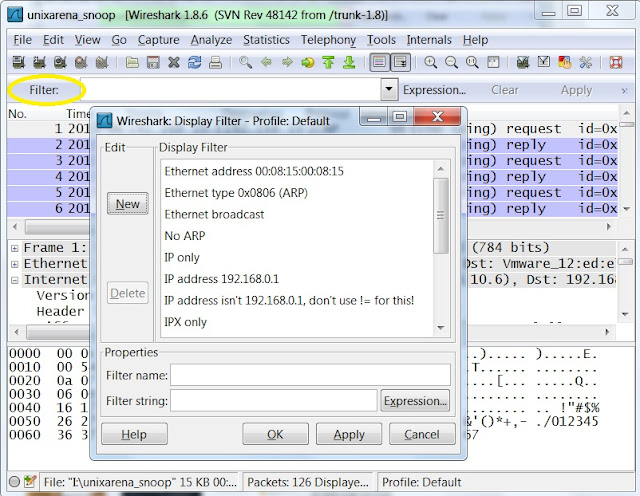

- Wireshark capture filter to specific top level domain how to#
- Wireshark capture filter to specific top level domain software#
- Wireshark capture filter to specific top level domain zip#
You can look for external recursive queries with a filter such as udp port 53 and (udp & 1 = 1) and src net not and src net not On many systems, you can say "port domain" rather than "port 53".ĭNS servers that allow recursive queries from external networks can be used to perform denial of service (DDoS) attacks. If you want only destination host you should use dst host x.x.x. I removed the https.host contains filter and and added these two capture filters: src host 1.2.3.4 host 4.3.2.1 Where src 1.2.3.4 is my ip address and 4.3.2.1 is the ip address I'm connecting to, but it's still showing bunches of other ip addresses when I start capturing traffic in Wireshark. host x.x.x.x match either source or destination IP address x.x.x.x (useful to see traffic sent and received by an host, since most network communication are bi-directional). Wireshark accept it, but it seems it take into account only ip.
is specified also in the filter) -JDNS is a bit of an unusual protocol in that it can run on several different lower-level protocols. Also, as shown below, DNS traffic is shown in a light blue in Wireshark by default. The built-in dns filter in Wireshark shows only DNS protocol traffic. However, DNS traffic normally goes to or from port 53, and traffic to and from that port is normally DNS traffic, so you can filter on that port number.Ĭapture only traffic to and from port 53: port 53 Screenshots wireshark tshark Usage Example rootkali: tshark -f tcp port 80. Wireshark makes DNS packets easy to find in a traffic capture. Finally, remember that 10GB and faster interfaces can already generate heavy CPU loads. Use these cautiously if you inadvertently throw out interesting frames, you’ll have to perform additional captures. You cannot directly filter DNS protocols while capturing if they are going to or from arbitrary ports. Unlike display filters, capture filters tell Wireshark to discard information without storing it. Show only the DNS based traffic: dns Capture Filter Display FilterĪ complete list of DNS display filter fields can be found in the display filter reference The SampleCaptures has many DNS capture files. TCP_Reassembly has to be enabled for this feature to work. As you might have guessed, this takes a DNS request or reply that has been split across multiple TCP segments and reassembles it back into one message. The DNS dissector has one preference: "Reassemble DNS messages spanning multiple TCP segments". Also add info of additional Wireshark features where appropriate, like special statistics of this protocol. XXX - Add example traffic here (as plain text or Wireshark screenshot). The well known TCP/UDP port for DNS traffic is 53. TCP/ UDP: Typically, DNS uses TCP or UDP as its transport protocol.By default, tcpdump operates in promiscuous mode. Tcpdump provides a CLI packet sniffer, and Wireshark provides a feature-rich GUI for sniffing and analyzing packets. Tcpdump and Wireshark are examples of packet sniffers.
Wireshark capture filter to specific top level domain software#
HistoryĭNS was invented in 1982-1983 by Paul Mockapteris and Jon Postel. A packet sniffer is simply a piece of software that allows you to capture packets on your network. You probably want to analyze the traffic going through your.
Wireshark capture filter to specific top level domain how to#
Any ideas of how to accomplish this would be appreciated.ĭumpcap -i1 -b filesize:100000 files:200 -f not src net 10. is the system used to resolve store information about domain names including IP addresses, mail servers, and other information. You will now see a pop-up window on your screen.

To the script, but in both cases it complained about a syntax issue. It is important to collect all of the network traffic so I was hoping just to filter out transfers between these two machines rather than specifying all of the connections I need to capture. The only problem is that the PCAP then includes this transfer in the files and as they are already compressed causes the files to balloon in size, going from sub 10 MB to 80 MB+. We have access to another machine on the network not in the data center and would like to collect the files over the network. catch all the HTTP requests to a certain domain 2 Answers: 0 What about this filter (http.host '') & ( 'GET') You can generate your own complex filters very easily. The work flow at the moment involves collecting the files directly from the data center and uploading to a work machine for analysis.
Wireshark capture filter to specific top level domain zip#
After X period of time the files are compressed using 7 zip to make the files as small as possible. Currently I have some traffic being forwarded to a machine in a data center, this machine has a PCAP script running to grab all of this traffic.


 0 kommentar(er)
0 kommentar(er)
